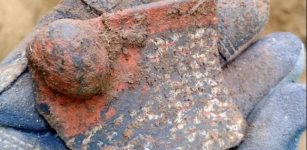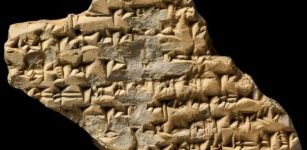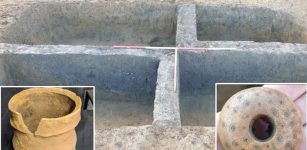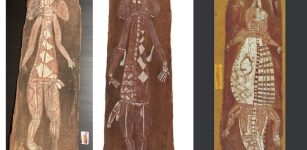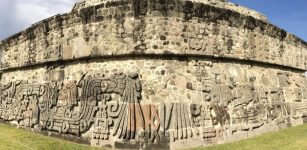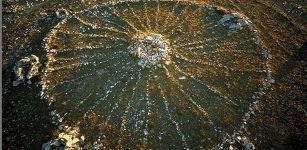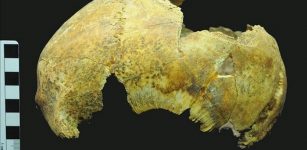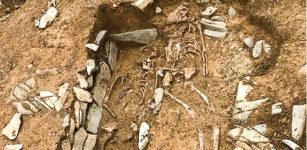Excavations At Okazaki Castle Reveal A 400-Year-Old Massive Unbroken Wall
AncientPages.com - A 400-meter stretch of unbroken castle wall--the largest intact example of such stone masonry from the feudal era --has been discovered during excavations at Okazaki Castle, the birthplace of the founder of the Tokugawa Shogunate (1543-1616), one of the most influential men in Japanese history.
It said the wall, which lies south of the castle, is believed to have been constructed by 1644, when Tokugawa Iemitsu (1604-1651), the third shogun, was in power.

Left: A dig shows the stone wall of Okazaki Castle and a portion that was buried in Okazaki, Aichi Prefecture. (Provided by Okazaki’s education board); Right: A section of the stone wall around Okazaki Castle near the riverbed of Otogawa river (Go Kitaueda)
Some sections of the fortification had remained visible. The excavation found that the wall actually stands 5 meters, including the portion that was buried, to extend 400 meters around the outer edge of the castle. Much of the wall still remains buried.
The contour of the wall also matches a depiction in a map of the castle and surrounding area produced in 1781.
Tokugawa Ieyasu (1542-1616) was born at Okazaki Castle, and later lived there for about a decade in his early adulthood until he moved his base to Hamamatsu Castle in Shizuoka Prefecture.
The original Okazaki Castle, most likely a wooden fort, dates from 1455 and was built on the grounds of Myodaiji Temple by Saigo Tsugiyori. Okazaki Castle was moved to its present location by Ieyasu's grandfather in 1531.
After Ieyasu was able to take control of the whole of Japan following the Battle of Sekigahara and the defeat of his rivals the Toyotomi clan in 1600, he moved his base of operations to Edo (present-day Tokyo).
Okazaki Castle was then occupied by vassals of the Tokugawa until 1868.
AncientPages.com
source: The Asahi Shimbun




